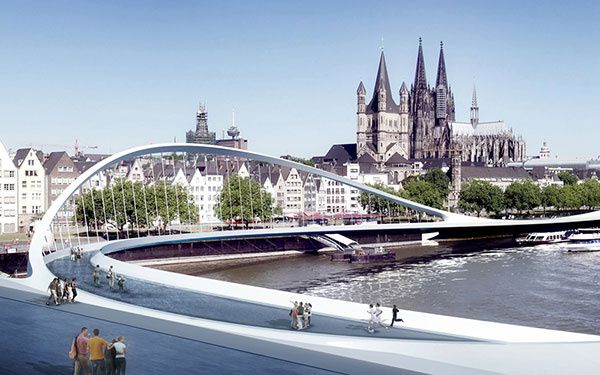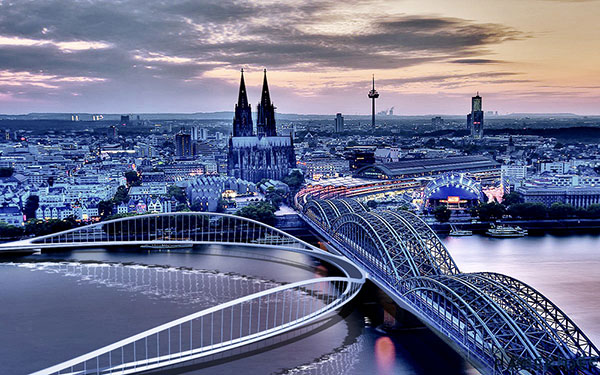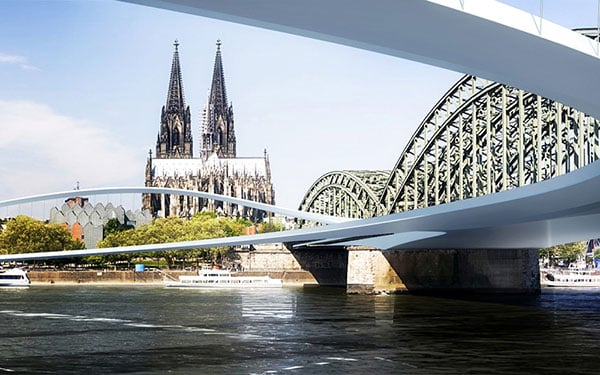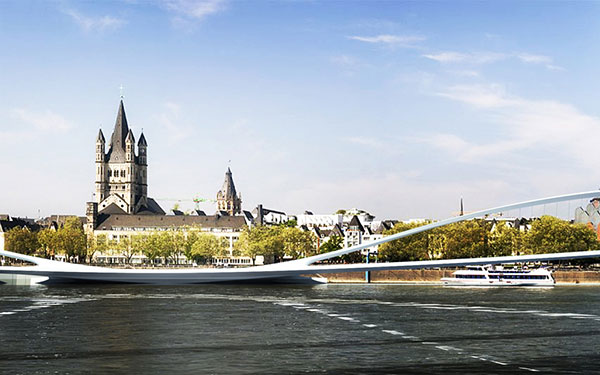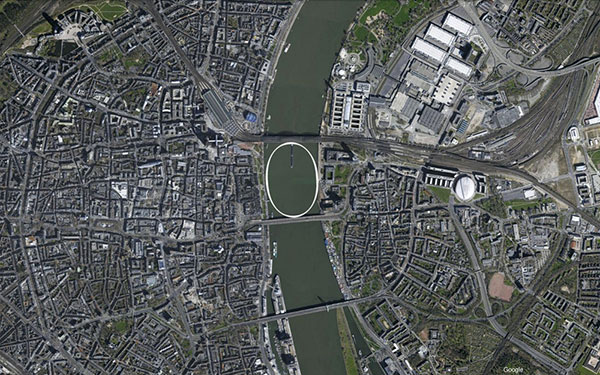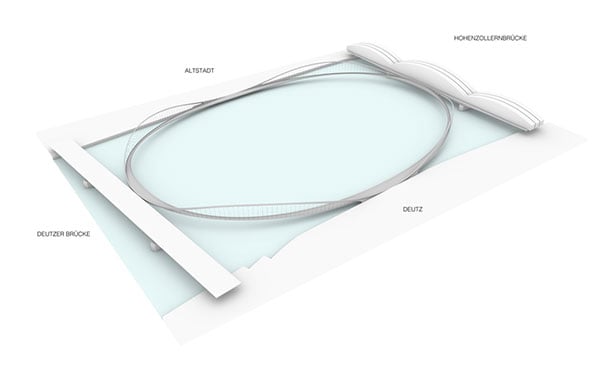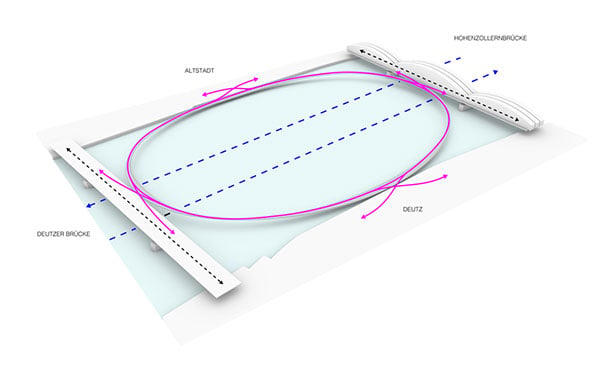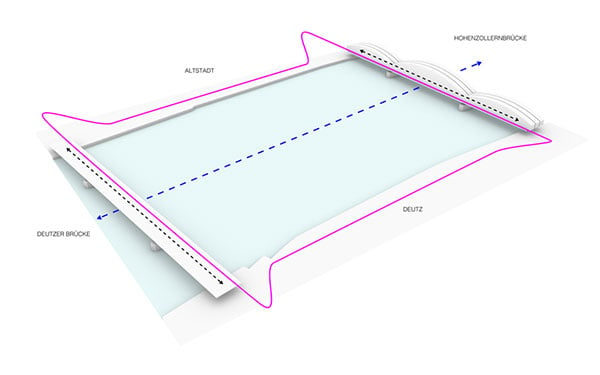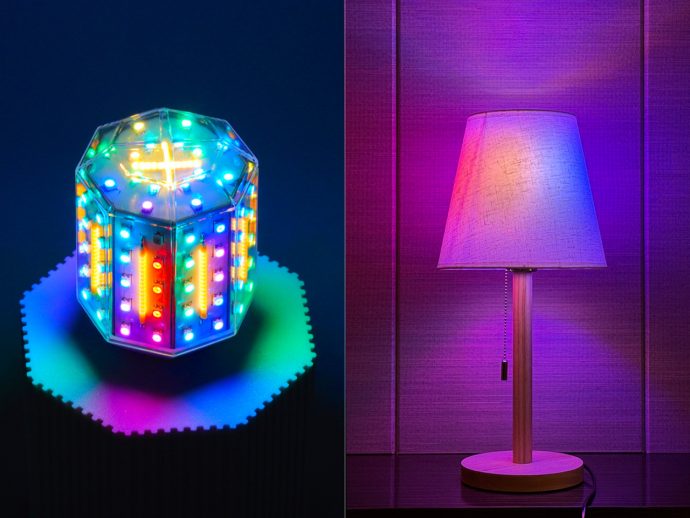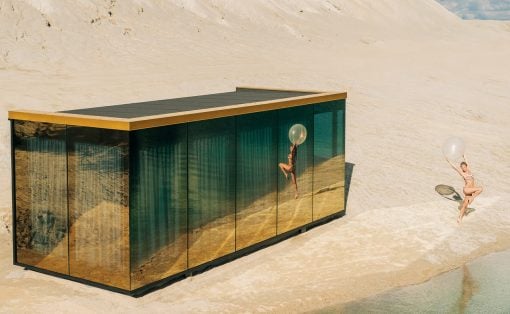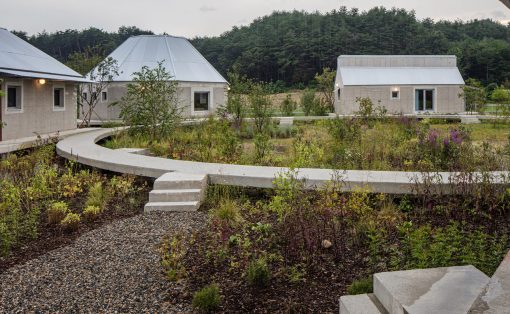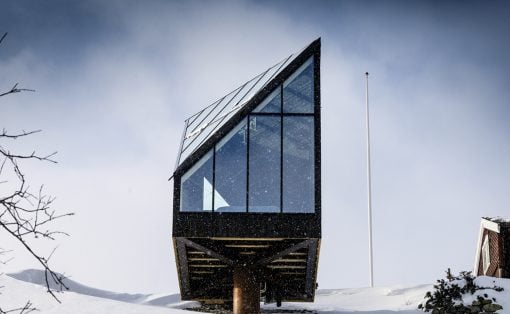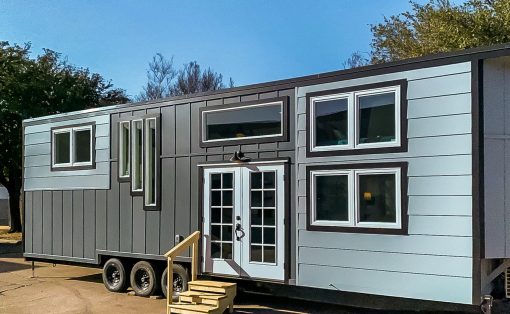Located between two major bridges at the Rhine Carée, a significant public urban space of Cologne, the RheinRing represents the new center & links the two halves of the city. The circular construction serves as a pedestrian walkway directly accessible from the historical city center on the west, the Rhine Boulevard on the opposite side, as well as the flanking Rhine bridges. Situated over this landmark river, the ring allows for an innovative experience as an urban space in the inner city, frequented by pedestrians and cyclists. The gained urban space has great potential for cultural events, sports & leisure activities.
The free-floating ring above the river Rhine is a light arch construction that picks up formal references to the flanking Rhine bridges as well as to the special buildings nearby such as the LanxessArena event center, the main station building, the Museum Ludwig and more. The geometry of the RheinRing is based on the mathematical model of a super ellipse, a flattened ellipse that mediates between the square and the round forms. The bridge above blends smoothly into the square of the Rhine Carée and, following the same formal principle, forms wider and narrower areas, which arise from the planned utilization.
The geometrical model introduced in 1959 by Danish writer and inventor Piet Hein describes a form that is pleasing to the eye and which he himself describes as follows: “The superelljpse has the same convincing unity as the circle and ellipse, but it is less obvious and less banal, it is a relief from the straightjacket of the simpler curves of first and second powers, the straight line and the conic sections.” The cantilever arch bridge forms a barrier-free and inviting access with its generously rounded passages to the water’s edge and to the existing Rhine bridges. Here the new pedestrian promenade joins the existing route forming a multi-layered road network. Since the support-free suspension requires no additional bridge piers in the Rhine Carée, river traffic moving along the north-south axis remains unaffected.
Designers: Marco Hemmerling & Stefan Polónyi
